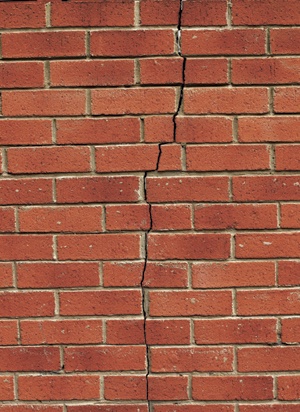Those little cracks in your home’s walls, doors and floors might not be as harmless as they look. Not every crack is a problem beyond an eyesore. In fact, as a home ages, it’s a given that cracks will form in overused areas, like around doors and windows. Temperature fluctuations can cause building materials to expand and contract—and crack.
But a crack also could be the only visible symptom of a hidden and potentially serious problem with your home—one that will be harder to fix and more expensive to deal with later if you don’t figure out what’s causing that crack now.
A tip: Arm yourself with a magnifying glass and a pencil and inspect your home, inside and out, for cracks. Use the magnifying glass to find the tiniest cracks in indoor and outdoor walls. If a crack is just big enough to let the point of the pencil through, you probably don’t have to worry about it. But if the eraser end fits into the crack, it’s time to do some serious repair work.
Here are four places to stop a crack before it starts trouble:
- Your wooden front door. Unless you clean, sand and refinish your door regularly, it’s bound to dry out and warp or crack. Apply a protective urethane-based finish every couple of years or replace it with a fiberglass door.
- Any hole, gap, crack or opening on the outside of your house. Culprits: cracks around exterior light fixtures, outdoor taps; exhaust vents and fans; electrical outlets. Seal the gaps with caulk.
- Tile floors. Chances are, a cracked tile floor is covering up a cracked concrete floor underneath. To solve the problem, remove all of the cracked tiles and repair the cracked concrete before replacing the tiles.
- Bricks and mortar. Simple cracks that follow the pattern of the block underneath are normal, but cracks that cut straight through the blocks can signal a serious issue. Same goes for deep crevices in your stucco, or for substantial, diagonal cracks in interior or exterior walls at the corners of doors and windows. Large cracks like these can reveal that your home’s foundation is shifting. Consult with a foundation expert to learn how bad the problem is.

